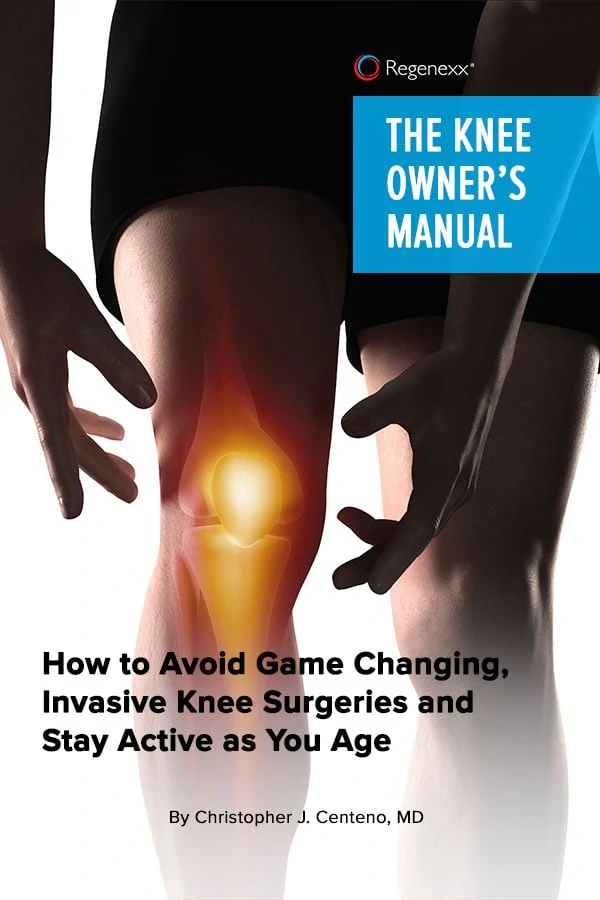Dr. Jason Markle presents the causes, progression, and the best treatment options for Avascular Necrosis of the knee.
Transcript
Dr. Jason Markle
Hello, Dr. Markle here, of Centeno-Schultz Clinic, talking about Avascular Necrosis of the knee, also known as osteonecrosis.
Causes of AVN
So let’s talk about some of the causes of AVN of your knee. Typically, it’s from high doses of cortical steroid use, high consumption of alcohol, or trauma-related; but rare, it could also be from that knee meniscal surgery or arthroscopic knee surgery you had – can sometimes cause and start Avascular Necrosis in your knee. These are all what we term “secondary causes.”
Primary causes would be of someone that sometimes gets what’s called spontaneous osteonecrosis of your knee, which happens in typically, females more than men (3:1), as well as individuals over the age of probably 60. Now, a primary, the initial one I talked about, typically is in your 20 to 40 age range.
Will AVN Heal on its Own?
Typically, the answer to this is “No.” Very rarely — probably 10 to 20 percent of them — will potentially respond on their own. But typically, they will progress over a time frame.
How Fast Does AVN Progress?
It’s very much dependent on the individual, the size of the lesion when diagnosed, as well as some of the symptoms. If someone gets diagnosed with AVN, just more on a diagnostic screening, and they have no symptoms, the chances of that progressing over a period of time, probably over three years, is typically right around the 65%.
If someone has symptoms, the chance of progressing then jumps up to about 85%. So progressing from the early-on, stage one, to stage two, three, and four can happen as soon as anywhere from a few months to about as most as three years.
What Is the Best Treatment for Avascular Necrosis in your Knee?
If you look at the literature and research, traditional orthopedic surgery typically does a core decompression. Now, that “core decompression” is essentially where they take a drill bit, drill out the dead part of the bone, and assume and hope that the actual bone itself around it, will heal the devoid bone. Now, this is something that’s successful probably about 60-65% of the time.
So, What About Regenerative Orthobiologics?…
If we utilize a regenerative orthobiologic, such as bone marrow concentrate — where we take the repair cells and concentrate them out of your bone marrow and precisely inject them into the area of dead bone — these stem cells and regenerative cells stimulate new blood flow as well as regenerate the bone itself. This is something that has been studied numerous times over the last 10 to 15 years with excellent outcomes – up to 80%+.
So, if we look at the pictures here, we can see the white areas, where the arrows are, in the top right, are an area stage two Avascular Necrosis. There is no cartilage collapse, even though this person is extremely symptomatic. If we look six months afterward, we can see most of those areas in the bone have healed and symptoms have grossly improved.
So, if you or any loved one have been dealing with Avascular Necrosis of the knee, have any questions or concerns, or, possibly, whether or not you’re a candidate for any of these non-surgical regenerative medicine treatments, feel free to reach out to us. You can comment or share below, or also look for us on Instagram, Facebook.
This is Julie’s Regenexx Knee Avascular Necrosis story. If you’d like to see if we can help with yours, you can contact us directly, or set up a Telemedicine Evaluation here:
I hope you guys have a good day. Take care.

